How to Make Soil Acidic for Blueberries (5 Expert Tips)
-

- Last updated:
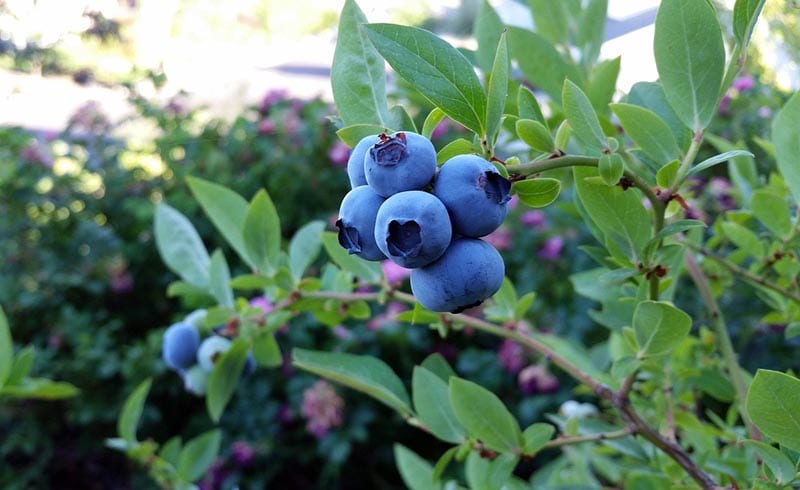
Between their juicy flavors and rich antioxidant properties, blueberries offer more than enough benefits to justify the added help they need to grow. A bountiful tree demands more preparation than the average garden plant. While most fruits and veggies enjoy slightly acidic soil, blueberries require an extra-low pH of around 4.5–5.0, which typically takes a little intervention to achieve.
Blueberries should have a dedicated space separate from the rest of your plants if you want a thriving garden. We’ll help you properly prepare for a successful growing season with this guide on acidifying soil for blueberry plants.
Before You Start: Test Your Soil
Correcting the soil is crucial before planting your blueberry bushes. Adding your amendments at least a few months ahead of time will allow them to create the perfect acidic environment.
Testing your soil will tell you whether you need to amend it. A simple litmus test is a fast and straightforward way to see if your soil is acidic, as is a pH meter probe. Other tests available online will detail your soil’s pH and nutrient values. Many of these products work by mailing soil samples to a lab, so they may take a week or more to give you results.
University extensions can also provide testing services, generally for a small fee. For someone new to gardening, these laboratory options also often offer resources for making the best amendments based on your gardening needs.
If your tests determine the pH is too high for blueberries, try these tips to make the soil more acidic.
The 5 Expert Tips to Make Soil More Acidic for Your Blueberries
1. Elemental Sulfur

- When to Use: Pre-planting
Elemental sulfur is one of the most popular acidifiers for garden soil. Bacteria in the soil oxidize elemental sulfur to create sulfuric acid that lowers the pH. It typically works best as a pre-planting amendment, but it’s still usable for established plants if the soil needs a drastic pH change. If you test your soil twice annually, minor maintenance won’t usually require elemental sulfur.
Follow these tips for incorporating elemental sulfur into your blueberry bed:
- Till the soil to mix the sulfur into the top 6–8 inches
- Use roughly 1 pound of sulfur per 50 square feet to reduce the pH by one point
- Consider your soil consistency, as sandy soils need less sulfur to acidify than denser clay or loamy soils
- Resist adding too much sulfur to drastically reduce the pH, as it could make the soil toxic
- Contact your local Extension Service for help measuring and adding elemental sulfur
Elemental sulfur works best when given plenty of time to sit in the soil. It generally needs several years to impact the pH significantly and stabilize the soil. You’ll want to add it at least one year before planting to give the bacteria a few months to process it.
Test the soil in the spring, and make another amendment as needed. Regular testing and treatments throughout the growing season may be necessary, especially if you take shortcuts in prepping the soil.
2. Soil Acidifier
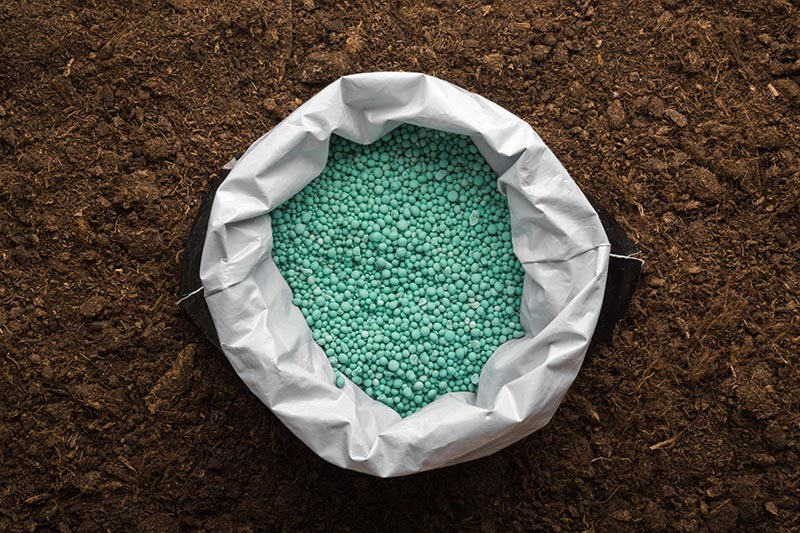
- When to Use: Pre-planting or after planting
Soil acidifiers, such as Espoma Organic Soil Acidifier, are commercial pelleted products typically consisting of elemental sulfur and gypsum. The granules are easy to apply and will gradually reduce the soil pH with treatments every couple of months during the growing season.
Most manufacturers will have you measure the soil acidifier according to the plant size. You will then sprinkle the granules over the plant’s drip line to help feeder roots around the edges. Follow the manufacturer’s directions carefully, as some products need to be mixed with water in a solution. Some additives can also be used as amendments to prepare the soil for planting in the garden or seedling pots.
3. Acidic Fertilizer
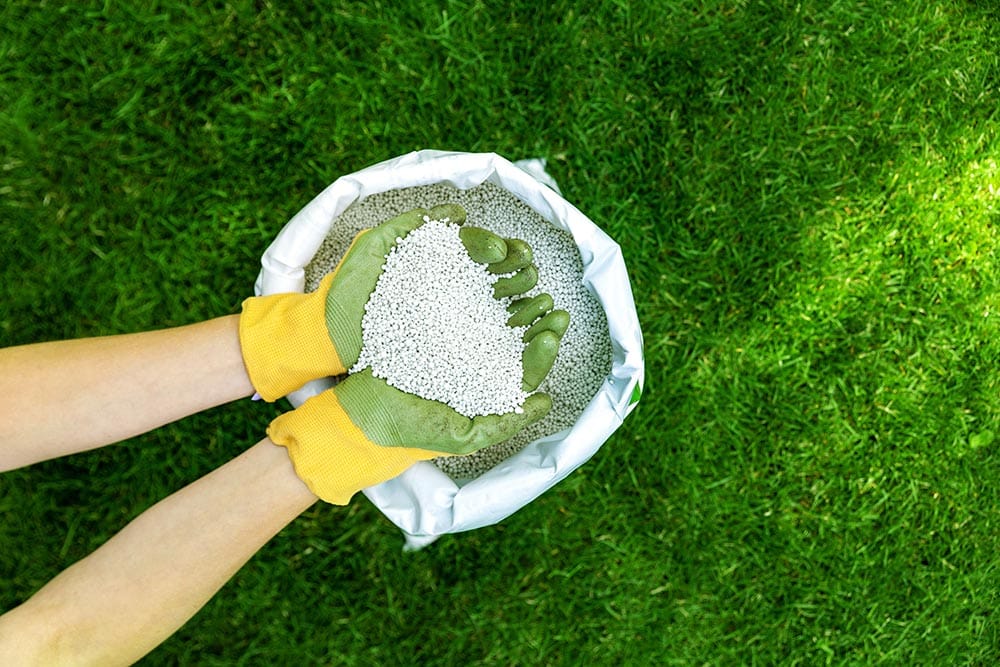
- When to Use: After planting
An acidic organic fertilizer is a perfect way to gradually change the soil acidity directly around your blueberry plant’s roots. The best options deliver nitrogen in ammonium compounds. Ammonium sulfate is the most acidifying ingredient, but ammonium nitrate, urea, and ammonium phosphate are also effective at reducing surface soil pH.
Acidic fertilizers are best when you only need to drop the pH a small amount. Even the most acidic options will generally lower the pH by only 0.1-0.2 points annually. But spraying the top 1–2 inches of soil with fertilizer can help reverse yellowing and stunted growth from iron deficiency in your plants.
Use acidic fertilizer during the growing season to provide vital nutrients and maximize your blueberry output. Always follow the manufacturer’s recommendations, and do not try to acidify the soil rapidly by over-fertilizing.
4. Peat Moss
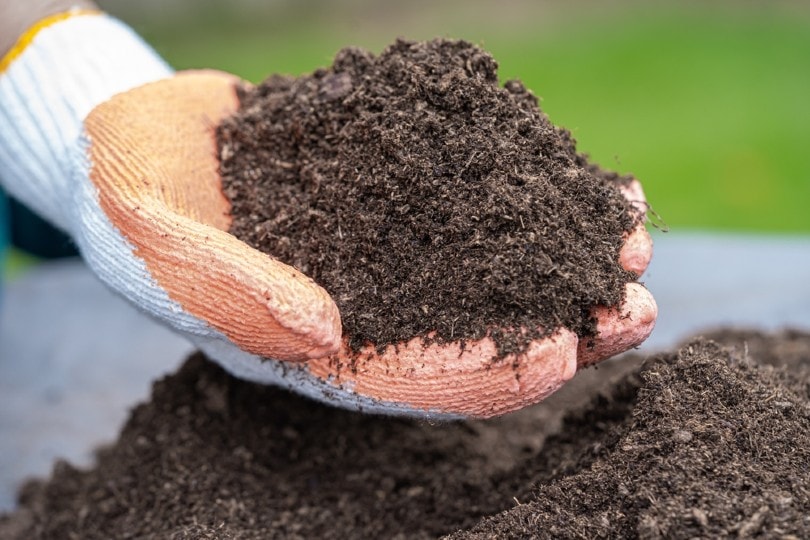
- When to Use: After planting
Peat moss is an organic material with a pH of 3.0–4.0, making it ideal for acidifying blueberry soil. As a bonus, the aerated texture improves permeability and moisture retention, allowing for optimal root health.
Mix sphagnum peat moss about 4–6 inches into the soil around the base of your plant at least once annually to maintain a comfortably low pH. Since it is slow to absorb moisture, soak the moss in water and squeeze out the excess before adding it to the blueberry plant soil.
5. White Vinegar
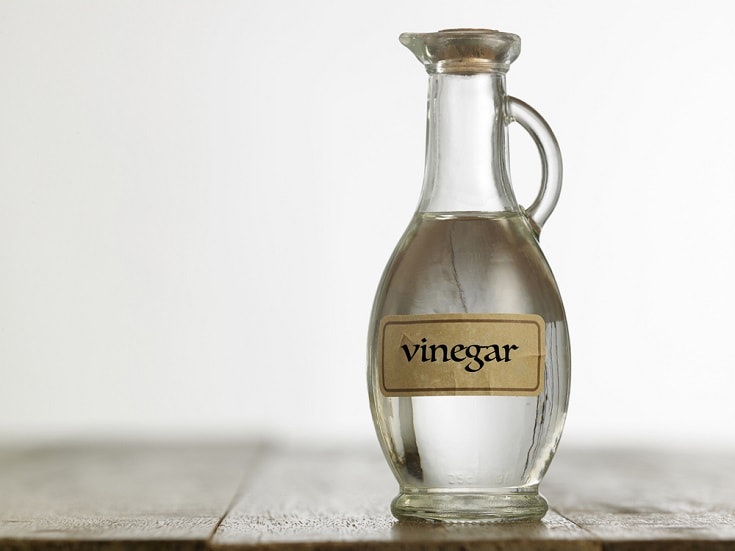
- When to Use: After planting
White vinegar isn’t a long-term acidifying solution, but it’s accessible, relatively straightforward to use, and fast-acting. Use it to quickly inject acidity into the soil around a struggling plant.
Combine two tablespoons of vinegar with a gallon of water, and use the solution to water your plants. Repeat this once a week. White vinegar is not a long-lasting fix, so you should use it only when you can’t supplement the soil with an acidifier or fertilizer.
How to Use Elemental Sulfur After Planting
Peat moss and fertilizers may be the most convenient methods for post-planting soil acidification, but the long-term benefits of elemental sulfur can still come into play with a bit of extra work.
Add elemental sulfur to the root zone by digging at least four holes around your blueberry plant’s drip line. Each hole should be a foot deep and 4–8 inches wide. Mix ¼ cup of sulfur with the removed soil, and refill the hole with the mixture. Keep the area moistened but not overly soggy to ensure the sulfur interacts with the bacteria and takes effect.
The Importance of Acidic Soil for Blueberries
Acidity promotes beneficial bacteria and fungi in the soil surrounding blueberry plants. These microbes improve the soil structure and release ammonia, a rich nitrogen source, and other essential minerals that blueberry roots can easily absorb.
When the soil pH is too high, blueberries will develop a yellowing color and look underdeveloped due to a lack of critical nutrients, such as iron, magnesium, and phosphorus. Maintaining the soil acidity will allow blueberry plants to grow to their fullest potential and produce the best possible yields.
Conclusion
When you do more pre-work to acidify the soil around your blueberries, you’ll have less maintenance after planting. Regular soil checks will be crucial throughout the season, but careful planning will ensure more positive results with every test. Choose a few blueberry cultivars to plant for cross-pollination, find a good garden plot, and test the soil as soon as possible to give your plants the best chance for survival.
Featured Image Credit: Kari Dickinson, Pixabay
Contents


